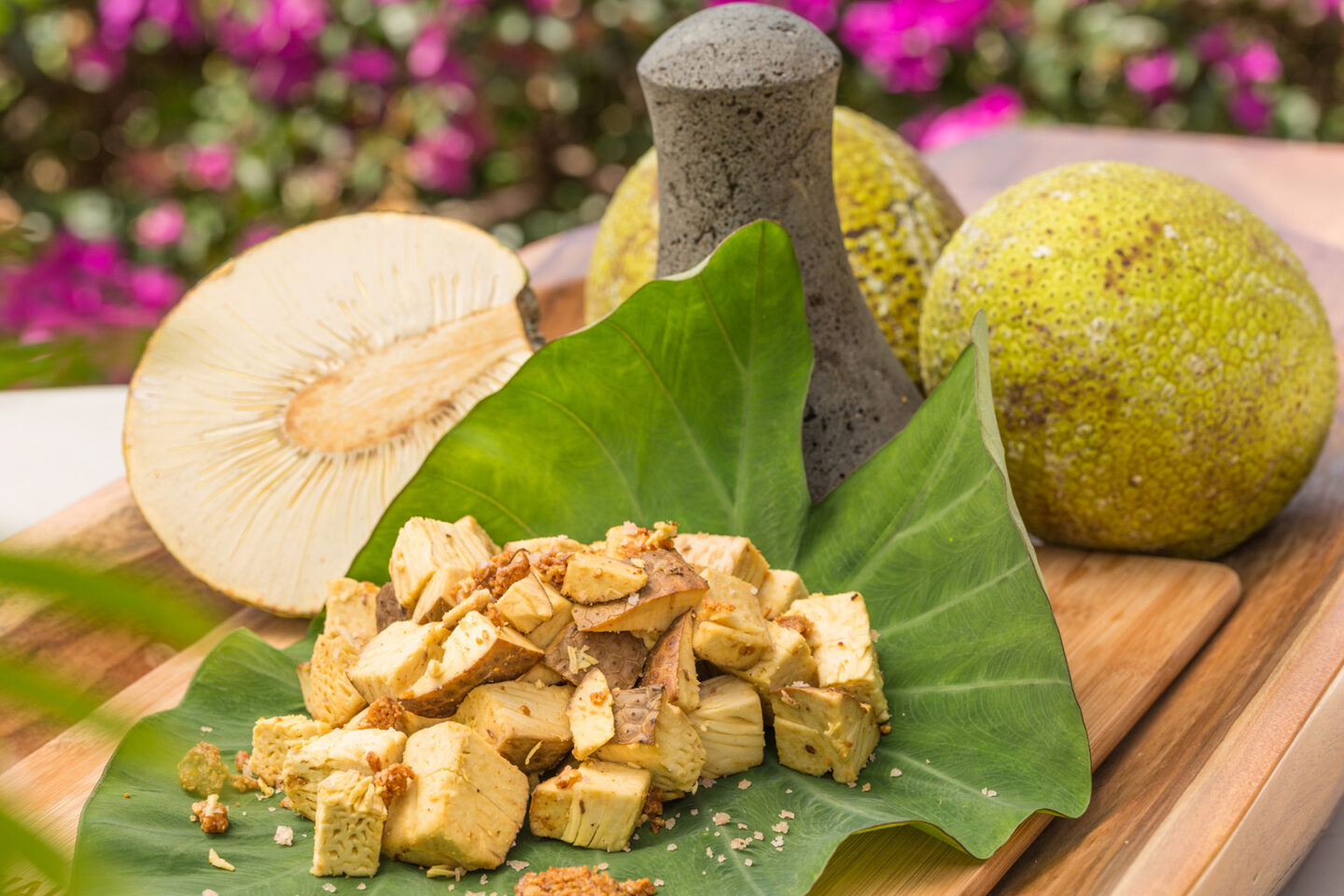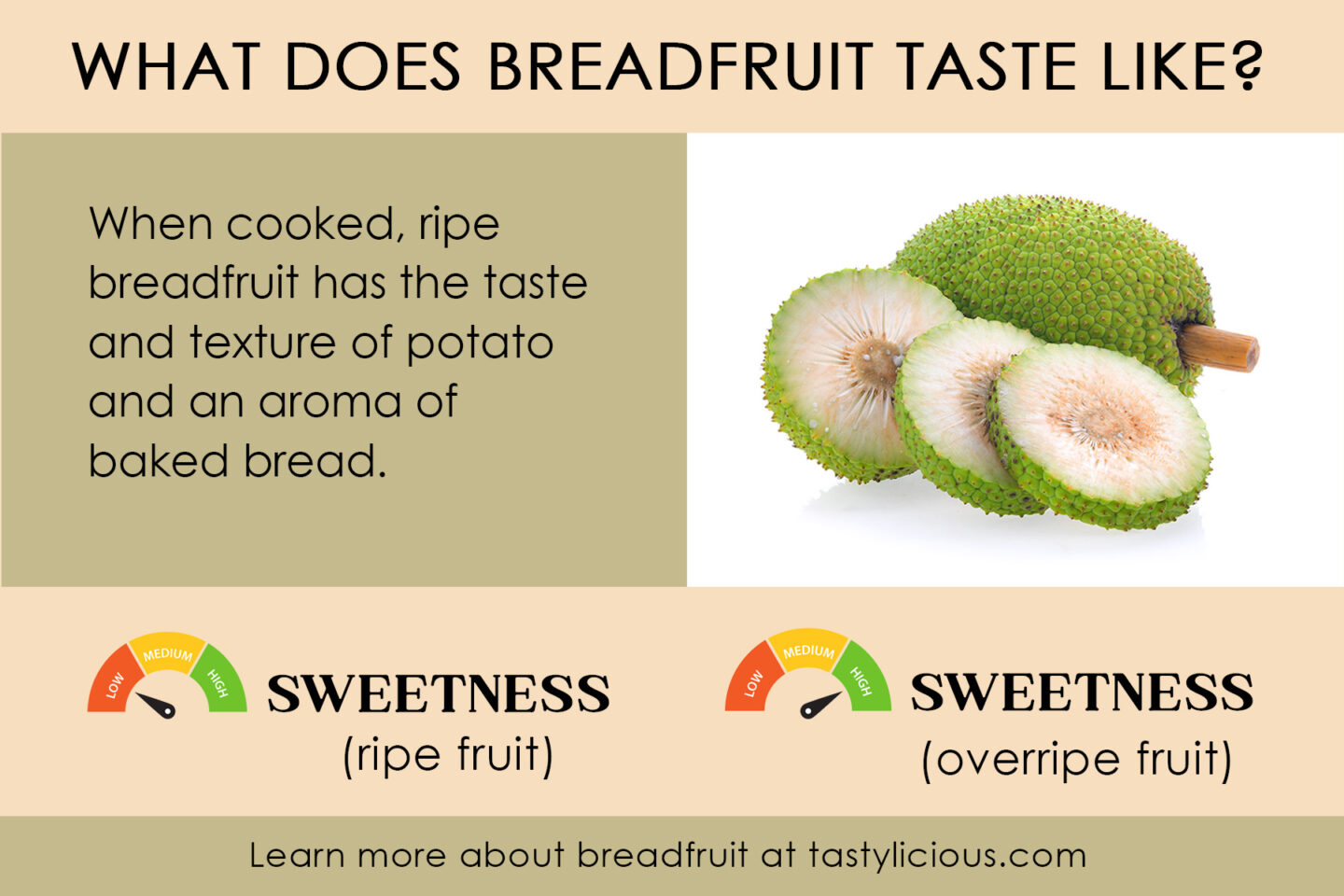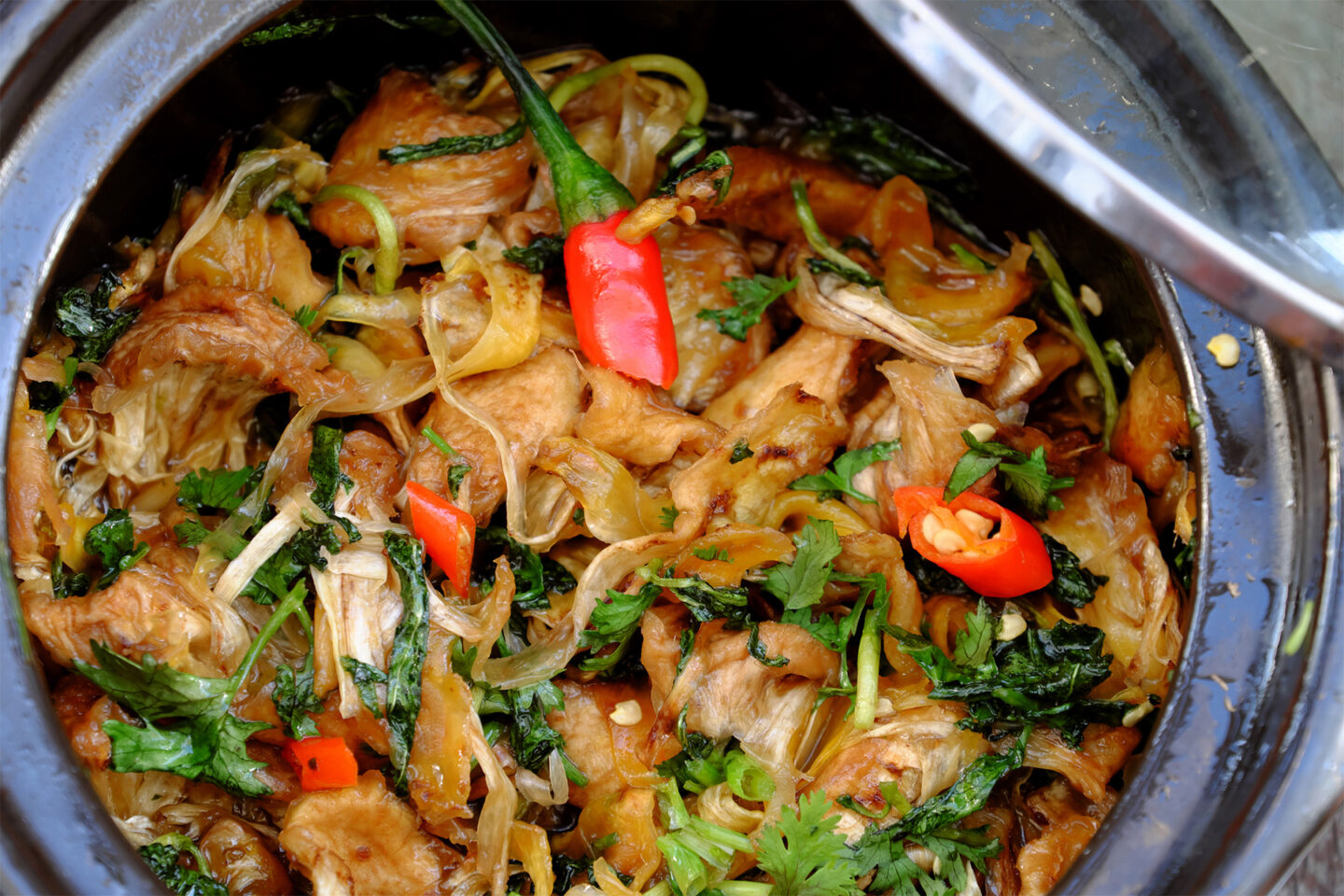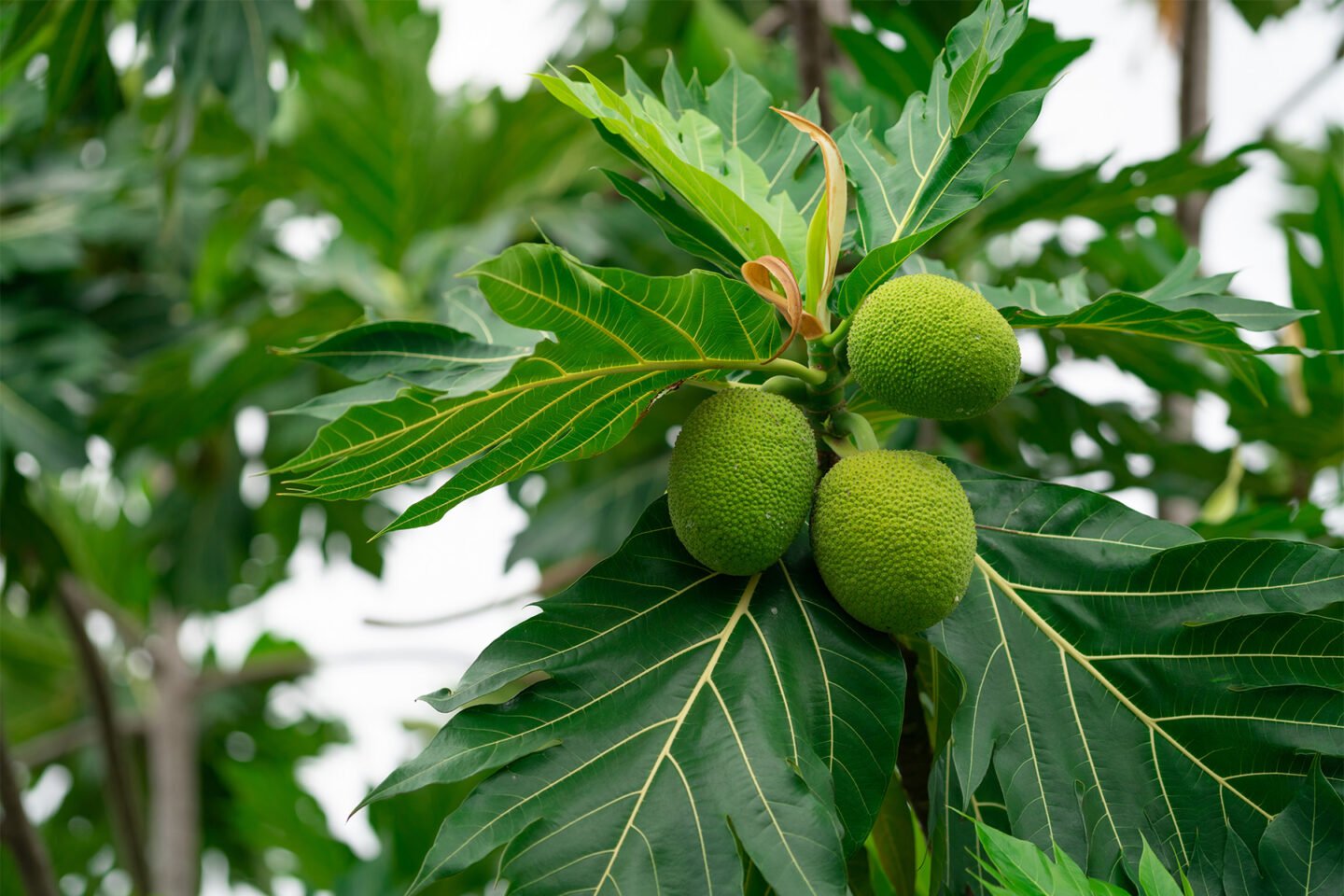The breadfruit is a tropical fruit that has yellowish-green alligator-like skin. It can grow to the size of a large football, measuring up to 12 pounds in weight and 12 inches in diameter. The fruit is a staple in the Caribbean, Latin America, and across Polynesia. It is revered for its versatility in the kitchen and nutritional goodness.

If you’re interested in trying it for the first time, you may be wondering, "What does breadfruit taste like?" We’re about to provide an in-depth rundown on the fruit’s flavor, texture, and uses for cooking. Let’s get started.
Table of Contents
How does breadfruit taste?
Unripe: An unripe breadfruit will have hard, green, fibrous flesh and can be used as a vegetable in recipes. It should be cooked to reduce the starchiness, a lot like a plantain. Once boiled until tender, it has a meaty texture and subtle flavor, similar to an artichoke heart.
Ripe: Once ripened, the flesh transforms into a creamy yellow color and softens into a pasty texture. Although its aroma becomes pleasantly sweet, the flesh still hasn’t converted all its starch into sugar, so it will lack sweetness. Most find the raw fruit unpleasant to eat at this stage.
When cooked, ripe breadfruit tastes a lot like potatoes and has a similar texture. Its aroma is often compared to the smell of baked bread.

Overripe: When left to overripen, breadfruit can be eaten raw as the excessive starch has converted to sugar. The fruit has a custardy, bread-like taste and much higher levels of sweetness. Its texture is very soft, sticky, and mushy. The skin will also have softened once the fruit falls from the tree; breaking into the fruit is easy once it reaches this stage.
Some varieties of breadfruit will contain copious amounts of seeds, while others will have none. The seeds are also suitable for eating once cooked, offering a nutritious, savory snack with a crunch.
Culinary Uses
Breadfruits are ideal fried, boiled, or steamed and are suitable for use in a wide range of recipes. Some common applications include:
- cooked whole and then stuffed with other tropical ingredients.
- sliced thinly and fried or baked to make crispy chips.
- overripe meat can be added to desserts, smoothies, and baked goods.
- processed into a versatile gluten-free flour.
- added to bread, pizza, salads, tamales, pancakes, and even baby food.
- roasted over a fire until tender, then used as a “makeshift” bread dough.
- pickled or cut into pieces for dipping into hummus.
- mashed and combined with coconut milk, then baked in banana leaves.

Nutritional Value
Breadfruit is prized for being an excellent source of antioxidants and complex carbohydrates. It is high in vitamin B and C, calcium, potassium, iron, and fiber. The flesh is a complete protein and is low in fat. It also possesses nine essential amino acids. Breadfruit can be used as a useful gluten-free flour, suitable for coeliacs.
Where to Buy
Breadfruit grows in abundance in Hawaii and can easily be found in local stores. Its Hawaiian name is Ulu, so keep an eye out for it if you’re in the area. For the rest of the United States and many other countries, finding breadfruit can be a challenge. If you like to buy locally, then your best option is to visit an Asian or Caribbean market or fruit store.
Another good option is to get your produce delivered from a specialty online supplier like Miami Fruit. Cans of sliced breadfruit are another possibility if the fresh option isn’t available.
Related reading:
What does a jujube taste like?
3 Facts About Breadfruit
1. The tree could solve a big problem.
The fruits thrive in tropical and subtropical climates, areas that account for around 80% of the world’s hunger. With one breadfruit capable of feeding a family of four, this tree could provide a solution to areas experiencing food shortages.
2. They come in various forms.
The breadfruit tree is a member of the Moraceae (fig) family and its botanical classification is Artocarpus altilis. There are hundreds of cultivars, each producing different flavors, textures, shapes, and even their own nutritional breakdown. If you ever find people in online forums offering different descriptions of a breadfruit’s taste, this is probably the reason.
3. They’re high-yielding.
The trees grow fast, reaching over 80 feet in height when mature. With very little maintenance, one tree can produce a massive 450 pounds of breadfruit each year for decades. When grown from seed, it usually takes 5 to 10 years to produce fruit.

Summing Up
Those new to breadfruit may initially be put off by its size and warty, spiky skin. But underneath the rind lies pulp, which has many uses in cooking, including sweet and savory dishes. Although some enjoy eating the fruit raw, most will find the taste and texture a little unpleasant before cooking.
When rating its flavor, breadfruit probably doesn’t compare to other tropical alternatives like bananas, pineapple, or starfruit. We don’t favor this fruit as a good option for eating out of hand. Most would agree that an apple would taste sweeter and have a better texture. However, breadfruit does have its benefits, the biggest one, in our opinion, is its nutritional value. Few ingredients offer the goodness that you can get from one cup of the fruit’s pulp.
If you’ve never tasted breadfruit, then we recommend taste-testing it at least once in your life. Although it is unlikely to become a mainstream item at the greengrocer any time soon, some rave about it! It’s worth remembering the old saying: “You’ll never know if you like it unless you give it a try.”
What is your favorite exotic fruit? Please comment below and let us know.

Leave a Reply